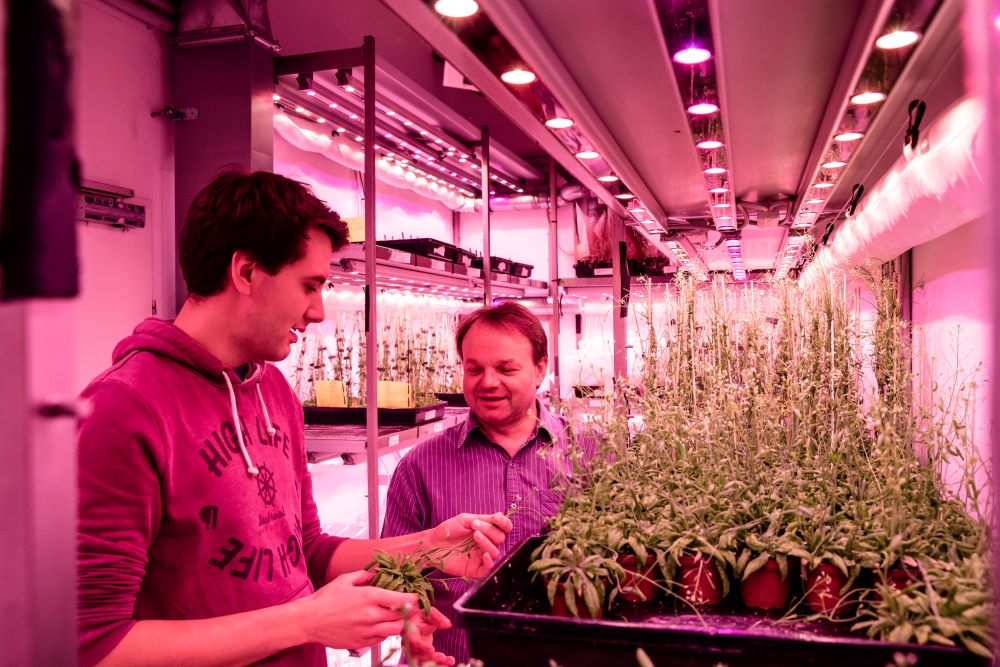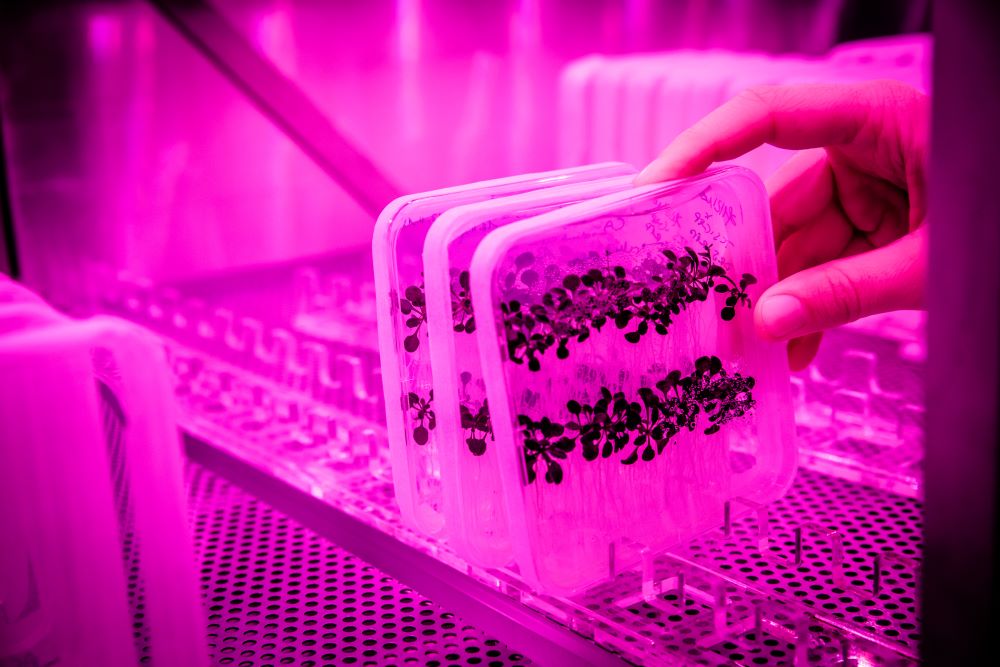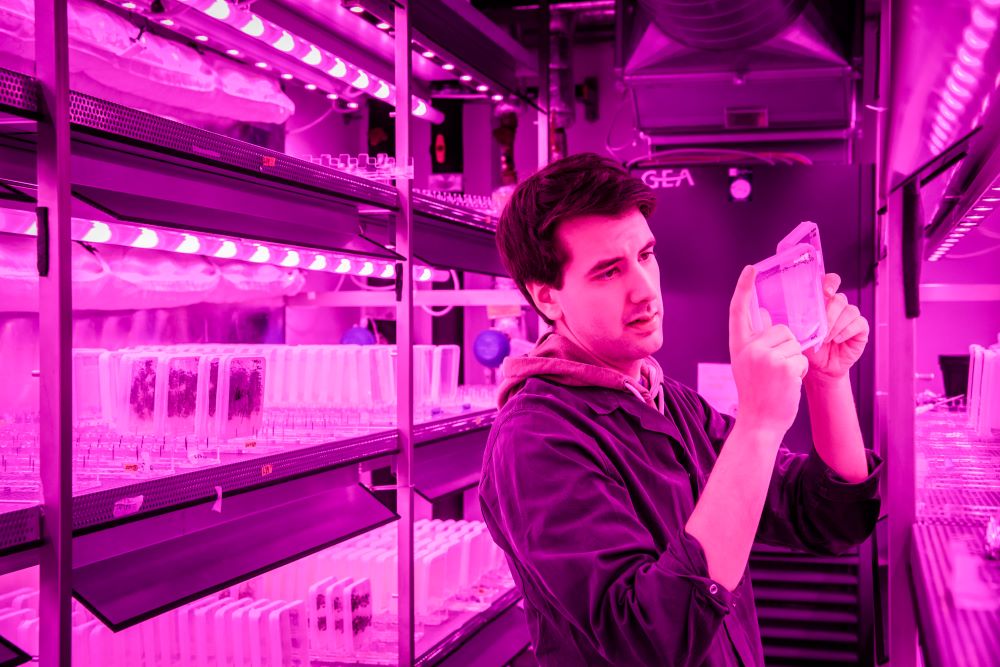April 4, 2024
How Plants Heal Wounds
Pressure changes and mechanical forces trigger wound healing in plants
Plants are very robust and survive harsh environments, owing in part to their remarkably efficient wound-healing capacity. For over a century, scientists aimed to understand it in more detail. A new collaborative study at the Institute of Science and Technology Austria (ISTA) now shows that the process is quite straightforward, revolving around pressure and forces. The results, published in Developmental Cell, hold promise for advancing agriculture.

Plants are made up of very rigid cells. Much like bricks in a wall, this feature gives them the structural support to maintain their shape and to stand upright against gravity. However, just like any living organism, plants can be injured, for instance, by wind or animal grazing. While humans and animals have cells that move with the blood to detect and heal wounds, plants had to evolve a very different mechanism due to their rigidity and immobility. A collaborative study by Lukas Hoermayer, the Friml, Benková, and Heisenberg groups at the Institute of Science and Technology Austria (ISTA), and colleagues now provides new insights into how they manage this.
The scientists injured thale cress (Arabidopsis thaliana) with a laser beam and analyzed the subsequent wound-healing process using microscopy. The results, published in the journal Developmental Cell, offer a precise view of what happens: Upon injury, tissue immediately remodels itself and triggers cells to divide to close the wound.
Wound healing in plants
Lukas Hoermayer has always been interested in nature. Growing up in the countryside, he spent a lot of time outdoors in the fields or vineyards. But his scientific curiosity about plants developed later on, when he interned at ISTA. “Since then, it has stayed with me,” says Hoermayer. While working on his PhD in Jiří Friml’s group, he investigated wound healing in plants, a field of research that has been around for more than a century. Fast forward a few years, and Hoermayer and his colleagues may have cracked the code.

Inside the root, plant cells are under high pressure. When tissue is damaged, cells die. They burst and release pressure, creating a void that must be filled as quickly as possible. Neighboring cells act as first responders, stretching into that gap. “It’s like having two balloons that are glued and squeezed together. If one bursts, the other one immediately stretches and deforms towards the ruptured one to balance the pressure,” explains Hoermayer. Cells elongate and begin to divide, giving rise to new cells that eventually seal the wound. While cells in the root typically divide only downwards, with gravity, in this scenario, they are able to do so in multiple directions. How come?
Mechanical forces at the heart of it
Hoermayer and colleagues inhibited certain molecules that were thought to impact this particular division process but observed no change in wound healing. “To our surprise, the process still worked, regardless of what we did,” says Hoermayer. Hence, they shifted the project’s focus towards mechanical aspects. To visualize these mechanics, the scientists used a specially designed microscope equipped with a laser. The laser beam injured the plant tissue, and the microscope recorded what happened next.

After analyzing the video material, the researchers discovered that microtubules—dynamic protein structures in the cell that help separate the genetic material during division—react to mechanical changes. When cells are stretched, the microtubules reposition themselves and establish the orientation of cell division, which triggers it.
“Our results suggest, that the sheer mechanical forces from the stretching of cells drive cell division in wound healing,” says Hoermayer.
Improving agricultural ecosystems
Similar to other recent ISTA publications, this new study demonstrates that tissue development and regeneration can be understood through the principles of mechanics. It also highlights the remarkable efficiency of plants in healing injuries—a power they must possess since they are constantly exposed to the forces of nature. It becomes even more important considering ongoing climate change.
In the wake of the environmental challenges, understanding how plants heal and regenerate wounds holds great promise for advancing agriculture. “Farmers may consider these details when switching to more resilient crops and robust plants for harsh conditions such as extremely saline or sandy soils,” explains Hoermayer. Optimizing and promoting the natural regeneration process also helps make agriculture more sustainable, as moving away from chemicals could reduce agriculture’s impact on the environment.

Publication:
L. Hoermayer, J. C. Montesinos, N. Trozzi, L. Spona, S. Yoshida, P. Marhava, S. Caballero-Mancebo, E. Benková, C.P. Heisenberg, Y. Dagdas, M. Majda & J. Friml. 2024. Mechanical forces in plant tissue matrix orient cell divisions via microtubule stabilization. Developmental Cell. DOI: 10.1016/j.devcel.2024.03.009
Funding information:
This project was supported by funding from European Research Council under the European Union’s Seventh Framework Programme 396 (FP7/2007-2013) / ERC grant agreement No. 742985, from the FWF under the stand-alone grant 397 P29988 and from EMBO (ALTF 253-2023).



